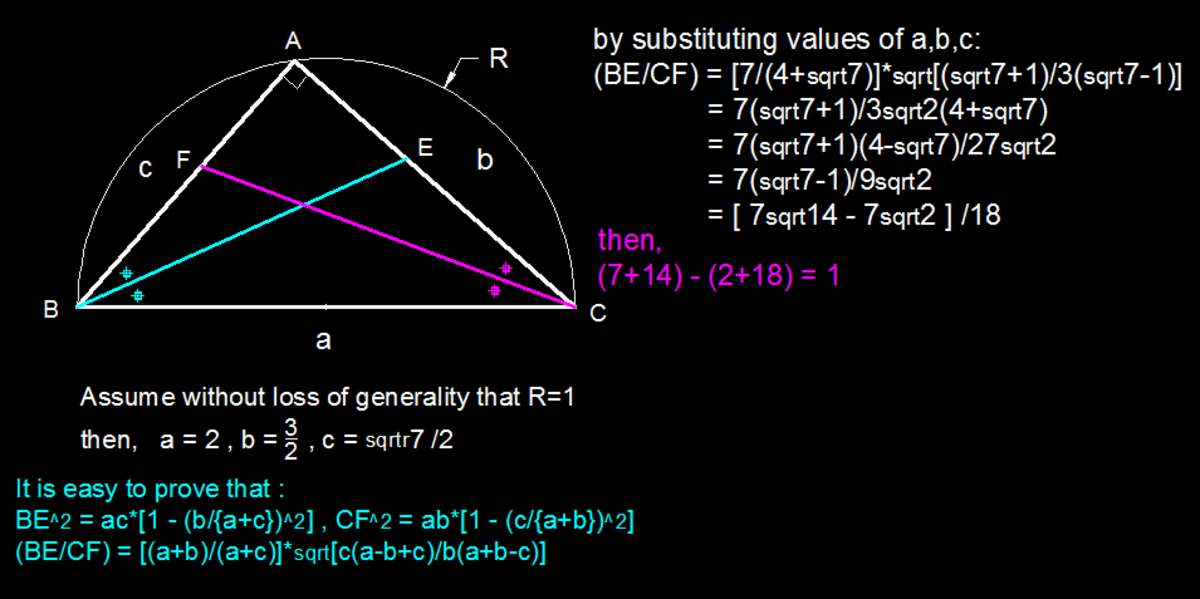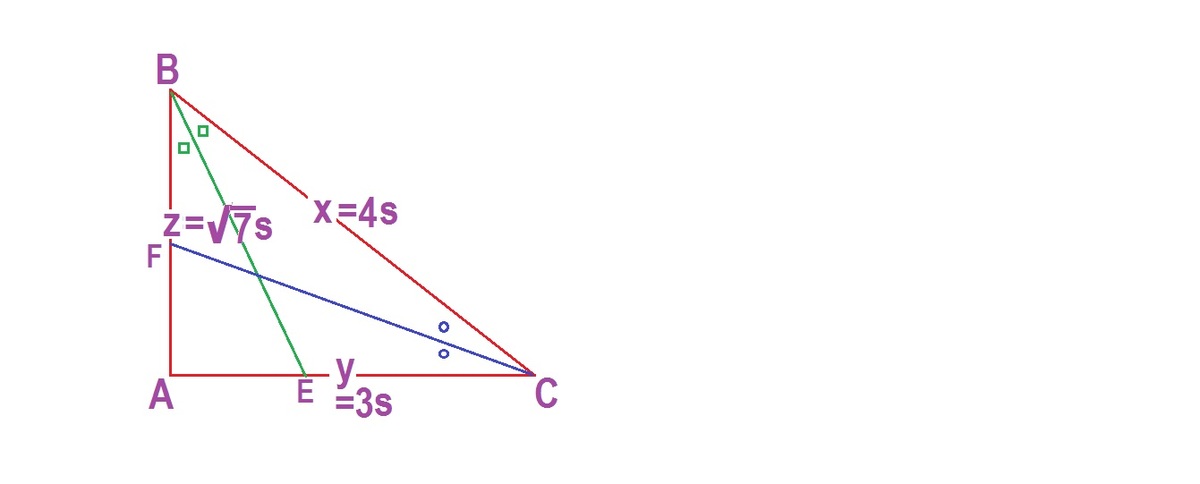Awesome Geometry!
The ratios of the lengths of the sides B C and A C of △ A B C to the radius of its circumscribed circle are equal to 2 and 1.5 respectively.
Find the ratio of the lengths of the bisectors of the interior angles B and C .
If the answer can be expressed in the form d a b − a c , where a , b , c and d are positive integers with a and b being square free, find ( a + b ) − ( c + d ) .
Try out a similar problem .
The answer is 1.
This section requires Javascript.
You are seeing this because something didn't load right. We suggest you, (a) try
refreshing the page, (b) enabling javascript if it is disabled on your browser and,
finally, (c)
loading the
non-javascript version of this page
. We're sorry about the hassle.
2 solutions

Nice solution ,+1! @ahmad saad
Least amount of computations! (+1)

Let AB=z, BC=x, CA=y, Radius of circumcircle=R. S=2R in the sketch. S o x = 2 R , y = 2 3 ∗ R ⟹ 3 4 ∗ y = 2 R . U s i n g e x t e n d e d S i n L a w , 2 R = S i n A x = S i n B y . E q u a t i n g t h e t w o v a l u e s o f x , a n d y w e g e t : − S i n A = 1 , s o A = 9 0 , S i n B = 4 3 , ⟹ S i n C = 4 7 . ∵ 4 2 − 3 2 = 7 S o A B C i s a r i g h t Δ 7 − 3 − 4 . C o s B = 4 7 , C o s C = 3 4 . B u t C o s 2 1 θ = 2 1 + C o s θ . ∴ C o s 2 1 B = 2 1 + C o s B = 2 1 + 4 7 , C o s 2 1 C = 2 1 + C o s C = 2 1 + 4 3 ∴ B E = C o s 2 1 B 7 = 2 1 + 4 7 7 = 8 4 + 7 7 C F = C o s 2 1 C 3 = 2 1 + 4 3 3 = 8 4 + 3 3 ∴ C F B E = 8 7 3 8 4 + 7 7 = 3 4 + 7 7 = 3 4 + 7 ∗ 4 − 7 7 ∗ 4 − 7 = 9 7 ∗ 4 − 7 = 9 7 ∗ ( 2 7 − 2 1 ) 2 = 1 8 7 1 4 − 7 2 = d a b − a c ( a + b ) − ( c + d ) = ( 7 + 1 4 ) − ( 2 + 1 8 ) = 1
Very nice approach,+1! , in the second last line, you forgot to put 7 before root2 , Otherwise perfect solution.!
Log in to reply
Thank you for the correction.